This post may contain affiliate links, where we may receive a small commission if you purchase something through following the links at no extra cost to you.
Puffins must be one of the cutest birds there is. Just one look at those wise, sad-looking eyes makes your heart melt. A close encounter with these amazing creatures is a memory for life. If you want a nature adventure different from anything else, then head to Runde Island in Norway. Read on for everything you need to know before meeting with the Puffins in Norway.
Perhaps, birdwatching in Norway was never on your bucket list. But you never know, that might change after reading this blog post. Puffins must be one of the cutest birds in Norway, and meeting them will create memories hard to forget.
Puffins are any of three species of alcids, or auks, in the bird genus Fratercula. The most common is the Atlantic Puffin, and this is the puffin you can see in Norway. It is a seabird that spends most of its time at sea and comes to land only for breeding.
The Atlantic puffin breeds not only in Norway but also in places such as Quebec, Iceland, Greenland, Newfoundland and Faroe Islands. Although the population of Atlantic puffins is large, the numbers are declining rapidly and it has been rated vulnerable by the IUCN.
This blog post aims to give you all the information you need to see puffins in Norway and more specifically to see them at Runde Island.

Content
Where is Runde Island
Runde or Runde Island is located on the western coast of Norway in the municipality of Herøy, in the Møre og Romsdal county. Nearby villages and towns include Fosnavåg, Ulsteinvik, Volda and Ålesund (Alesund). It is connected by the Runde Bridge to neighbouring Remøya, and by crossing several other bridges and islands, Runde is accessible by car from the mainland.
Runde is a great stop if you are making a road trip in western Norway. This region has so much to offer, like the famous Geirangerfjord or the hairpin roads of Trollstigen. This area is perfect for all outdoor activities and you are never far from the most stunning views of the Norwegian landscapes. There are many places you could stop in this part of Norway, and Runde is among the best. Should you like to explore more of this region you can spend a weekend in Hellesylt, visit the village of Stryn or take a ride with Loen Skylift.
About the beautiful Runde Island
Although connected with a bridge, Runde is the last island before the open sea sets in. Nature is not only wild. It’s spectacular and breathtakingly beautiful. In summer, the island is lush green, and the landscape with its mountains, cliffs, peaks and slopes is nothing but stunning.
TIP: Read our post on things to do in Bergen if you want to explore the largest city on the west coast of Norway
The island is not very large with an area of 6,2 sq km. In 2018, 108 people inhabited the east and north of this beautiful Norwegian island. The highest elevation at Runde island is 332m (1089ft) where Varden is the highest point.
The bird cliffs are in the west and, the road curves along the east -and north coast until the endpoint, from where the path to the plateau starts.
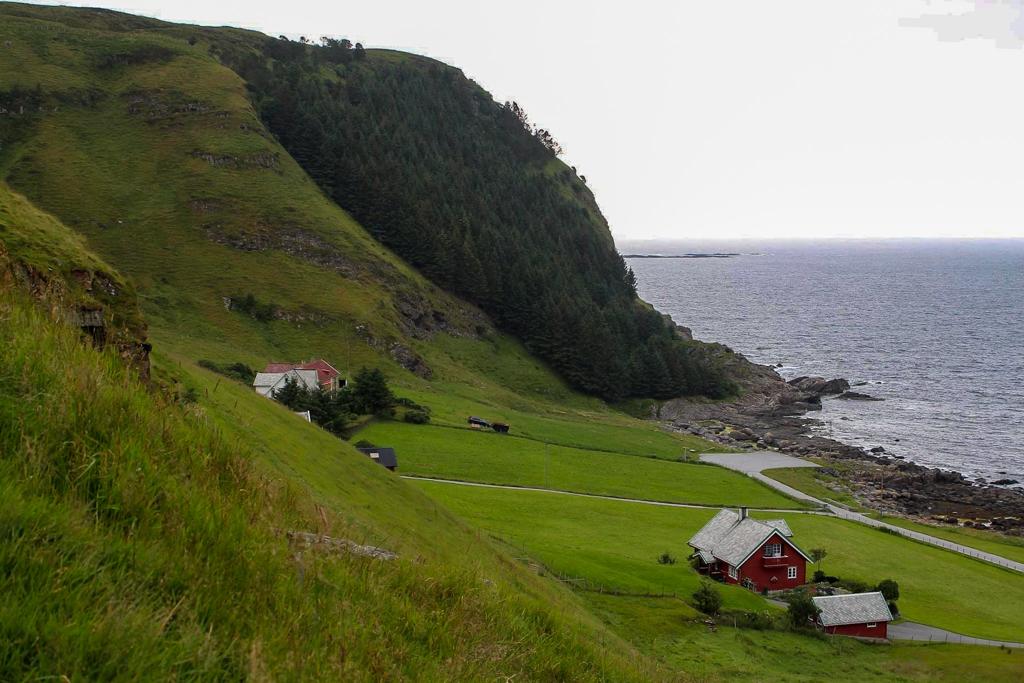
Why is Runde one of the best places to see Puffins in Norway
Runde is one of the best places in Norway to see puffins. The birds can be found in many places along the coast of Norway, but together with the island of Røst (in Lofoten Archipelago), Runde is one of the two main breeding spots for puffins in Norway.
The island is famous for its enormous amount of breeding seabirds, and between 500.000-700.000 seabirds inhabit Runde island in the season. Most of the birds are found in the steep so-called bird cliffs, but also elsewhere on the island birds have their nests. It is estimated that around 100.000 puffins are found at Runde. There is no question if you will see the puffins at Runde. Follow the recommendations in this blog post, and the question will be how many birds you have the time to see. With this high number of birds, we can guarantee close encounters with the puffins. Birdwatching in Norway has never been easier.
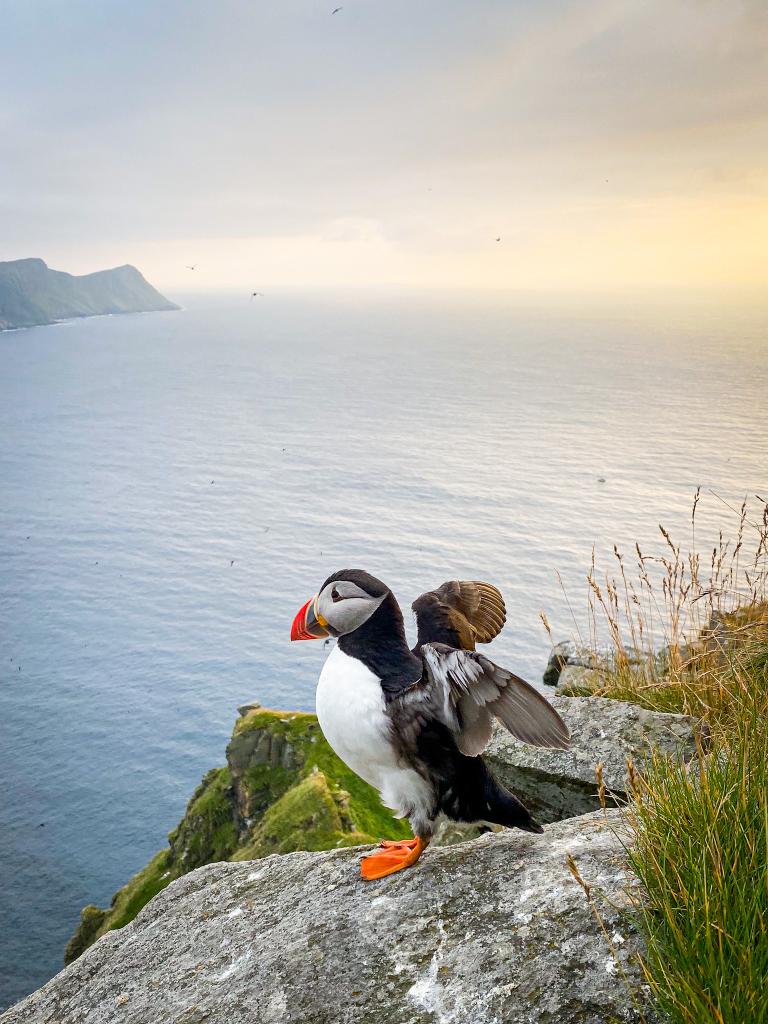
In addition to the puffins, you will also get to see other birds such as different Gulls, Common Murre, Fulmars and Northern gannets – the largest of the birds in the gannet family. Furthermore, also Common Shag, Great Skua and White-tailed eagle are normal to see at Runde Island.
The reason Runde is the best place to see Puffins in Norway is that you get so incredibly close to the birds. You will get so close you almost could touch the birds, but don’t do that of course. The puffins seem not to care about your presence at all and are busy going on with their life.
FUN FACT: Puffins can be up to 30-40 years. They are monogamous and have only one partner in life!
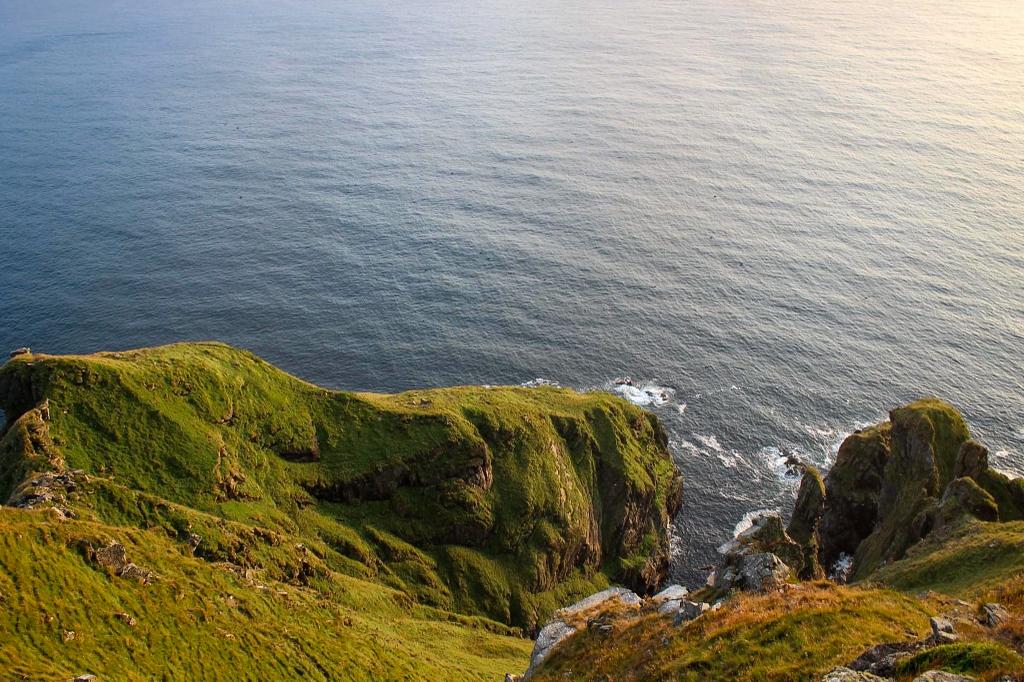
How to behave at Runde Island
First thing first. Let’s talk a bit about how to behave when visiting Runde Island. For your own safety, and due to respect for nature and the wildlife, stick to marked trails only. To protect the birds, it is forbidden to leave the marked trails on the island. At Runde, you are the guest, not the birds. The wildlife should be respected at all times, and leave no litter behind.
You will get very close to the puffins. Like in very close. Some might be so close that by stretching out you could touch them. Don’t! These are wild birds, and should not be disturbed.
During your visit to Runde, parts of your hike will be close to the edge of very tall cliffs. It is tempting to go close to the edge but don’t. It is dangerous and it is far down. Some birds (like the puffins) make their nests in the ground. They dig holes for their nests. By walking too close to the edge you can destroy the nests. Also, the ground might give in because of your own weight and you could suddenly lose your balance. And trust us; no one would like loosing the balance on top of these steep cliffs.
Some areas of Runde Island are protected. There are in total four bird sanctuaries and one nature reserve on the island. They are all connected to the bird cliffs. This means that some parts of the island are for the birds only, and that’s the way it is supposed to be. Please respect this. The birds are more vulnerable than your own wishes to explore. That said, don’t worry. Follow the below instructions and you will get closers to the puffins than you ever dreamt of.

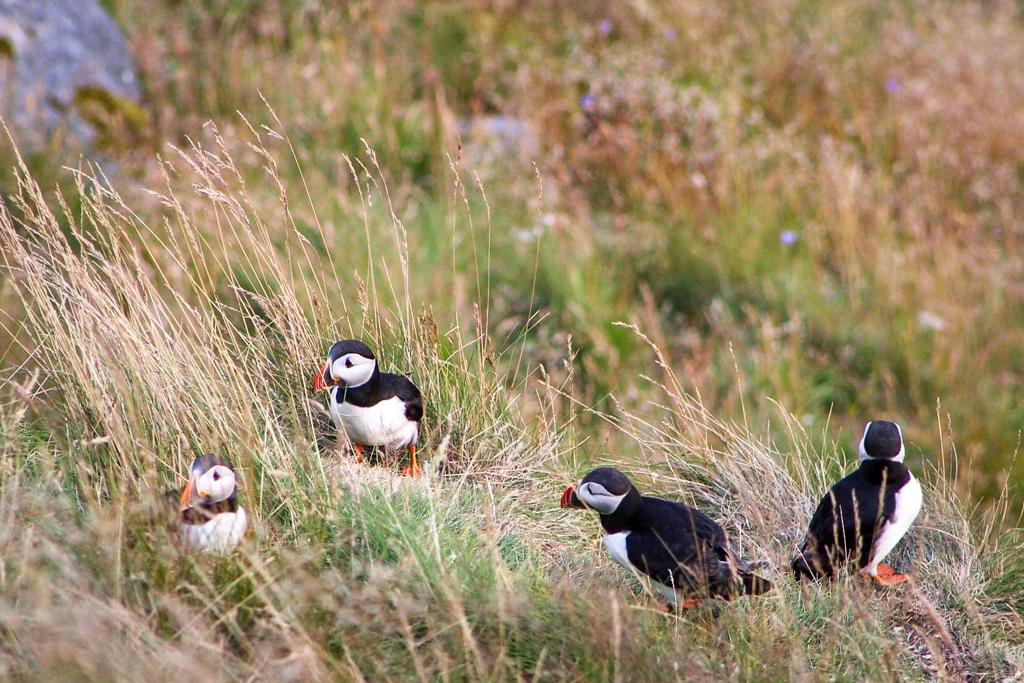
How to see the puffins on Runde Island
After driving towards the end of the road, you will see an S-shaped road going up the plateau. This is the road you will be taking towards the bird cliffs in the west. Count around 45 minutes of walking time each way. The first part of the road is paved and quite steep. After the steepest part, you arrive at the plateau, where the road splits. Continue straight to come to the bird cliffs. From here the landscape gets more flat. The trail is laid with stones, so it’s a fairly easy hike from now on.
On this part of the Runde plateau, you can see lots of Great Skua birds (also called Bonxie). And the other way around; the birds are also seeing you, and observes every step you take. If you get too close to their nest, they are unforgiving and will attack. Keep an eye out for them, they are also above your head. Stick to the paved trail, and you should be fine.
After a while, you get close to the cliffs on the western side of the island. Maybe you already here can spot your first puffins in Norway. But don’t stop here. Some people will, but not you. The longer you walk, the closer to the birds you will get. Continue along the cliffs until you reach some wooden stairs. This leads you to a fenced-in area called Lundeura, and this is where the magic happens.
Find a place to sit. Be quiet and enjoy this beautiful spectacle of mother nature! You will hear the ocean, perhaps the wind and thousands of birds. Don’t blame us if you forget the time. It happened to us as well. Very few moments has been more magical for us than watching the beautiful puffins in Norway.
TIP: Read our post about what to do in Oslo if you also are planning to explore the capital of Norway
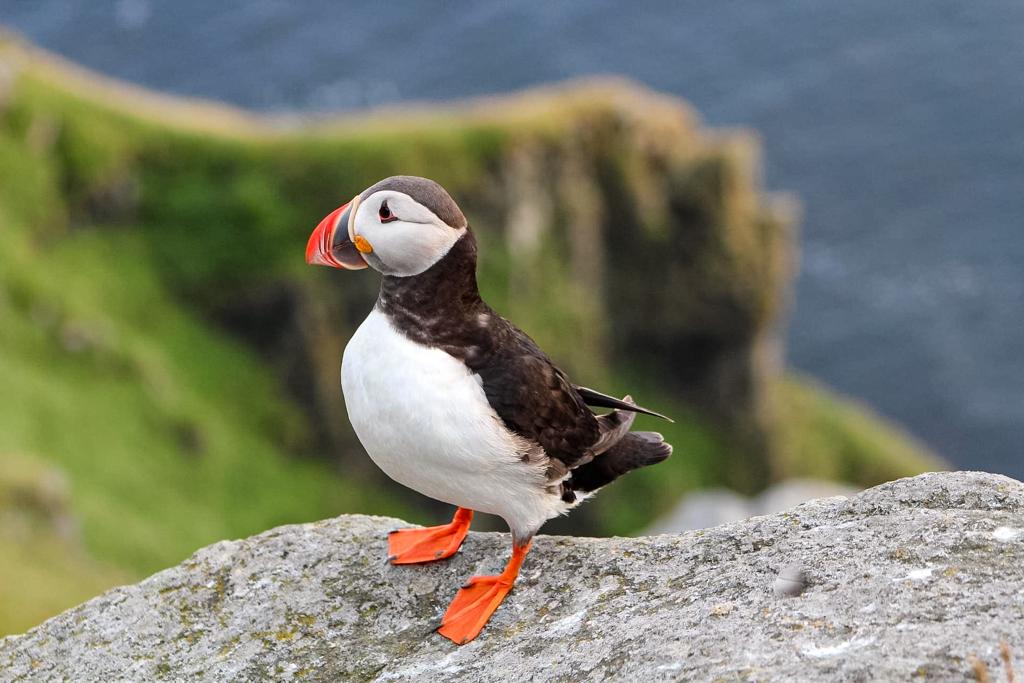
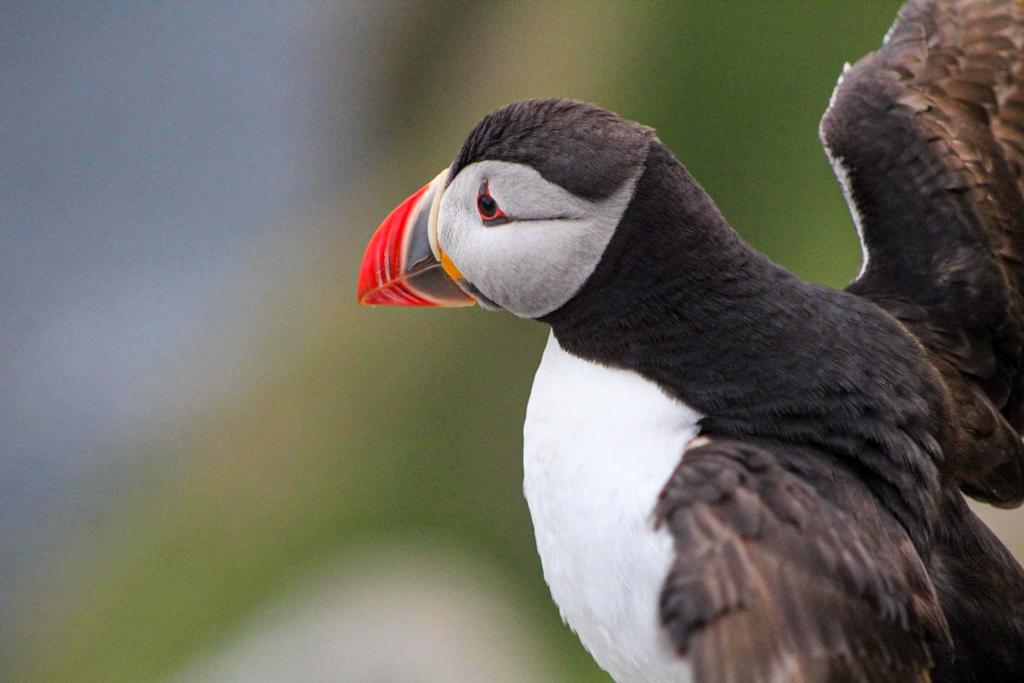
When is the best time to see puffins in Norway?
As mentioned, the puffins live most of their life at sea and only come to land to breed. The birds typically come in from the sea around March-April and the breeding season last sometimes out September. When the birds come in from the sea, it takes quite some time to make the nest and lay the egg, and until the egg hatches. Therefore, the best time to see the puffins in Norway is from late June to August. During this period the birds are at their most busy, and the bird cliffs are full of life.
The birds leave their nest in the mornings and spend the day at sea looking for food. They return to the nest in the evening, and that’s when you should visit. If you visit in the spring, be at Lundeura around 18-20 (6-8 pm). If you visit Runde Island in the summer, the best time to see the puffins is from 20.00 (8 pm) and maybe as late as 21 (9 pm). The evenings are bright in the nordic summers, so don’t worry about the daylight. The birds are most active when the sun starts to set, and this is also the time when you will get the most beautiful photos.


What else can you do at Runde?
There are two main reasons that people come to Runde Island. One is obviously for the reason that Runde is one of the best places to see puffins in Norway. The other reason is the treasure. Yes, you read correctly. Among treasure hunters, Runde Island is no secret.

Treasure hunt
19th of January 1725, the Dutch ship Akerndam set sail from the Netherlands. The ship got caught in a storm in the North Sea and eventually went down just north of Runde Island. The whole crew of 200 men were lost at sea.
TIP: Read our post from Rugen Island in Germany if you’d like to explore other northern European islands
A treasure was discovered in 1972. It contained some 57.000 coins of which 6000 gold coins. Most of the treasure is found, but still, up to this day, treasure hunters dive the waters north of Runde Island in search of more of the lost goods.
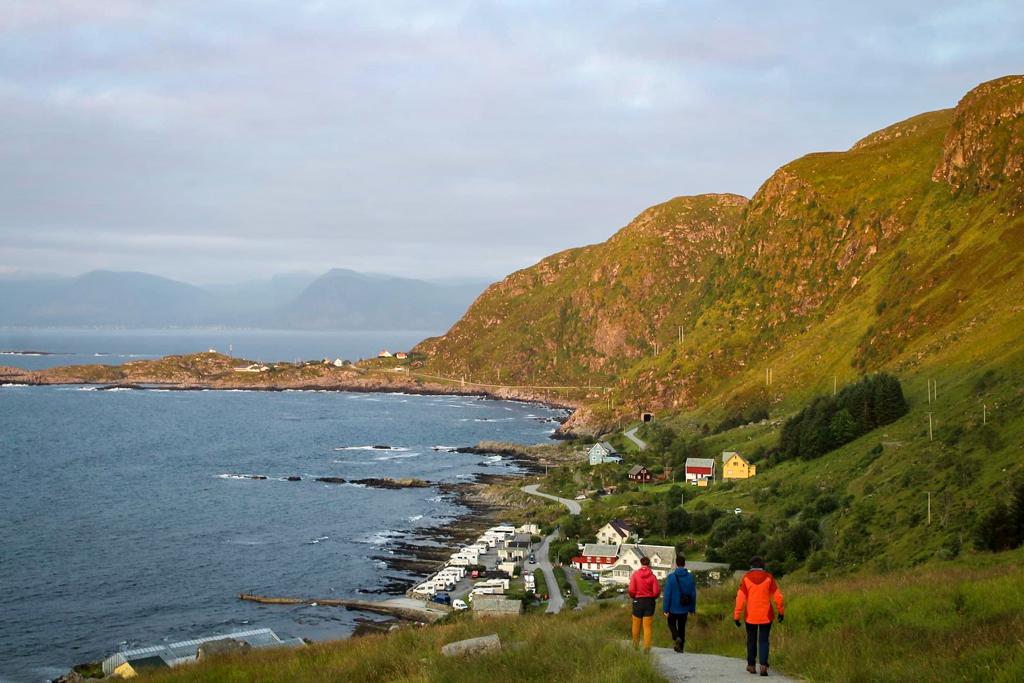
Explore the nature
There is more to nature at Runde than just the bird cliffs to the west. Several trails lead you in different directions over the island, and to see it all you would need days, even though the island is small. Nature is nothing but spectacular, with all the steep cliffs and, it’s so green everywhere. Runde Island is truly a special place and one of the most unique travel destinations you can visit.
At the north-western tip of the island, you can visit Runde Lighthouse. The trail is marked, and it takes around 1,5 hours to walk there. To get here, take to the right at the crossroad where you walked straight to the bird cliffs.
Runde Island is not your typical beach destination in Norway, but close to the marina, there are a few decent beaches. Just don’t expect temperatures like in the Mediterranean.
TIP: If you are looking for other great nature encounters in Norway, head to the north. If you travel in the winter, a dog sledging trip is a great way to get close to nature. Check out Tromsø Dog Sledding Tours for a wide range of tours.
Accommodation at Runde Island
You can see the puffins and get an overview of the island in just a few hours. However, if you have the time, why don’t spend some more time here. You can stay overnight at Runde. There are in fact a few options for accommodation at Runde Island. Check e.g. Christineborg Gjestehus for rooms, or Goksoyr Camping for cabins or a place for your tent or camper van. Should you be looking for more unique accommodation, check out the self-catered rooms at Runde Lighthouse.
If you prefer to stay more central with better access to e.g. restaurants and shopping, nearby Fosnavåg only 20 minutes away is a good option.
TIP: Looking for an amazing restaurant experience? We got you covered! On the tiny, tiny island of Skotholmen, you will find an incredible restaurant, the Kami Skotholmen. Set in a truly unique location, this place serves gourmet food based on today’s catch and what the sea brings in. From the restaurant, you also have a view directly into the kitchen. The only way to get here is 10 minutes by boat from Fosnavåg. Reserve way in advance. When making reservations you will also get the time for boat departures. Boat not included.
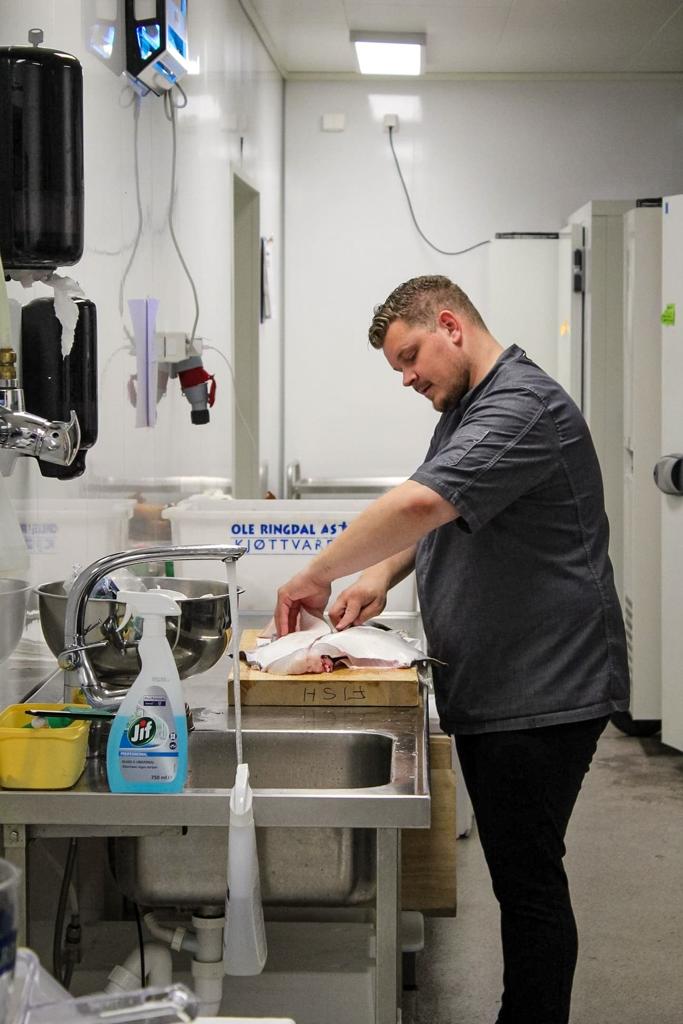
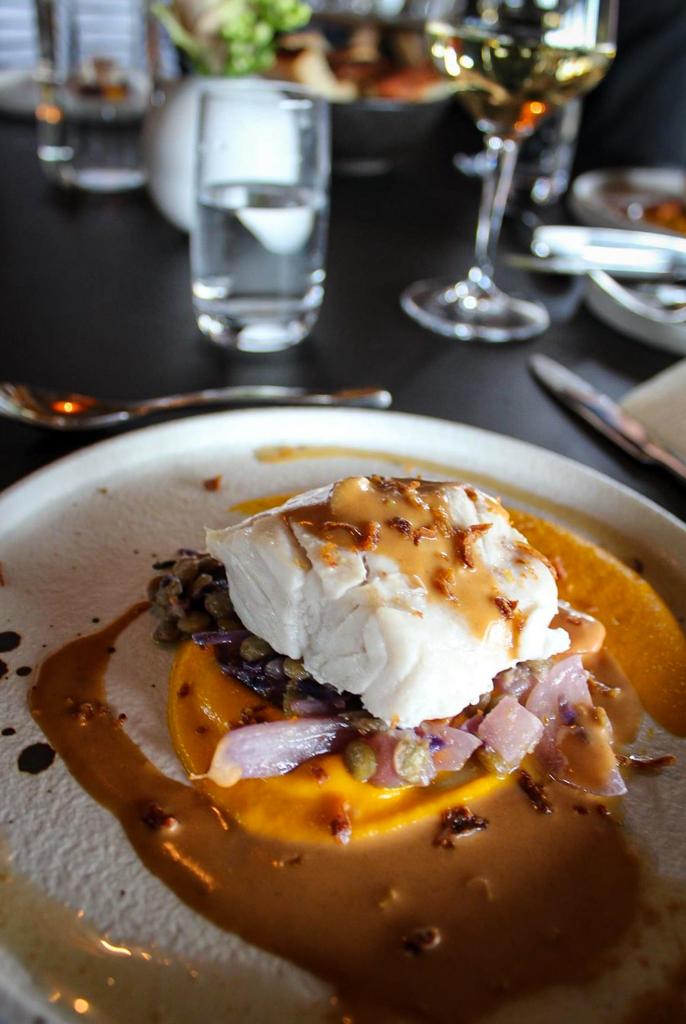
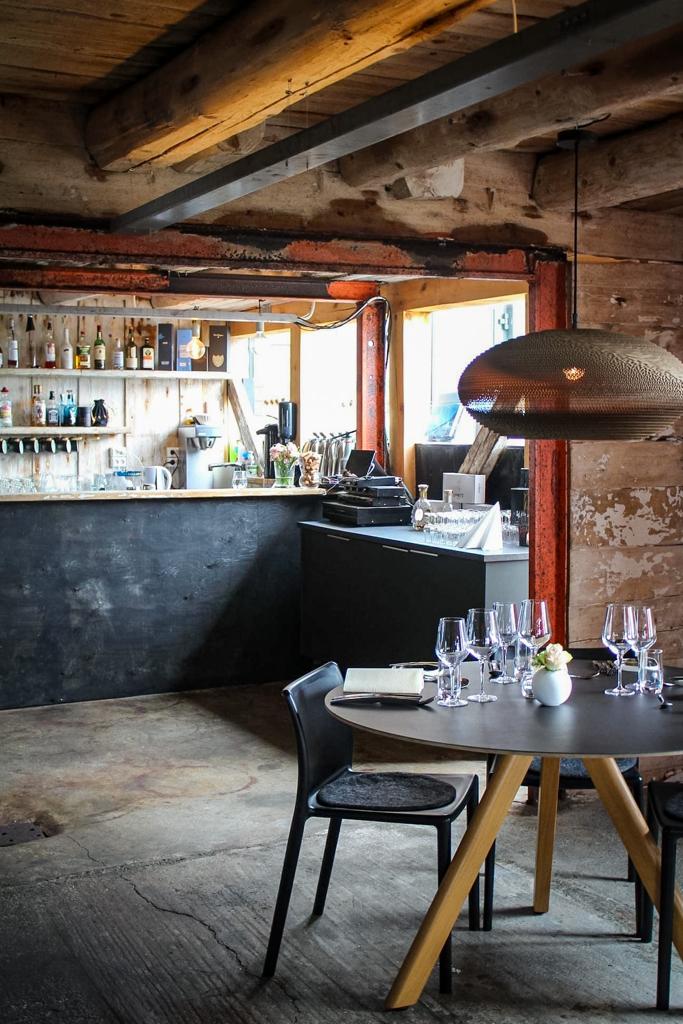
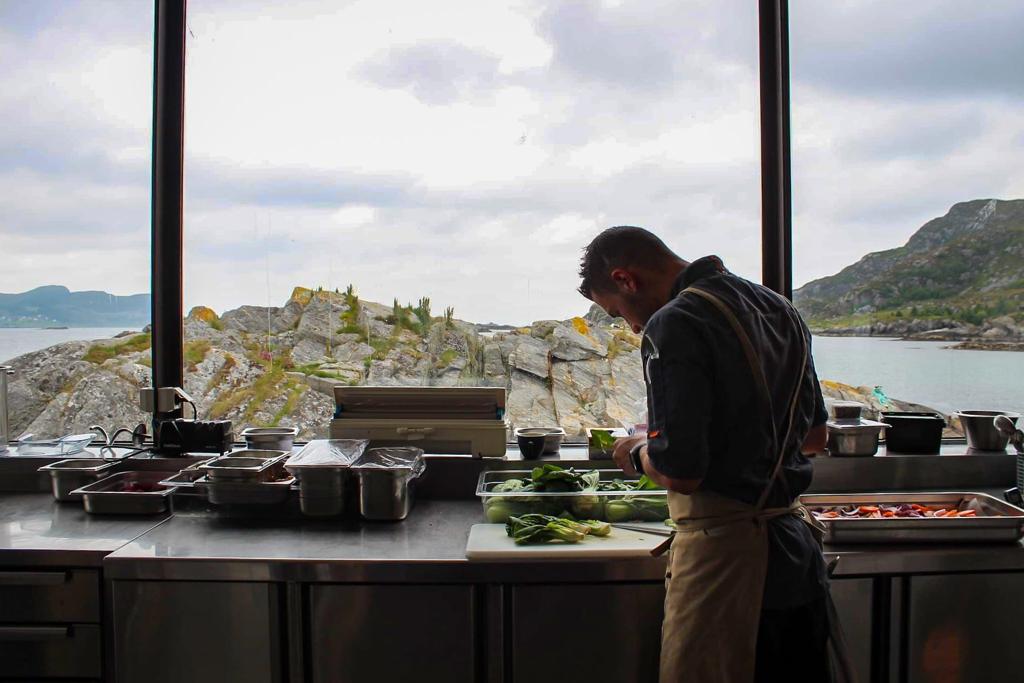
Plan your trip – How to get to Runde Island in Norway
You can get all the way to Runde by car. From road E39, you can get to Runde Island by following road 653 to roads 61 and 654. If you are coming from Ålesund, parts of the journey are by ferry. Runde Island is a perfect place to visit if you are doing a road trip to the western coast of Norway.
TIP: How much does a road trip in Norway cost? This guide on Norway road trip costs will give you all the answers
It is possible to get to Runde by public transport, although this requires some planning and can be pretty time-consuming. However, if you have the time and are flexible, travelling by public transport is possible. You can take a bus from Ålesund to Fosnavåg and catch bus 331 to Runde.
The buses might not correspond. Plan ahead. If you choose to take the bus to Runde, please note that the last departure of the day is at 16.45 (4.45 pm) with no return the same day. Therefore, this option is best if you plan to stay a night or two at Runde Island. You can, of course, catch a bus from Fosnavåg to Runde in the morning and return in the afternoon, but as the best time to see the puffins at Runde island is in the evening, we don’t recommend this solution.
The closest airports are Ålesund and Ørsta-Volda airports. At the airport, you can pick up a rental car, or, with good planning, travel by bus to Runde. Check here for timetables for buses in the region.

